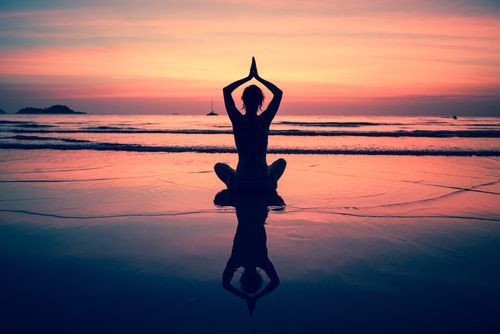Yoga Practices Personalized: 10 Yoga Styles To Choose From

Yoga is a deeply ingrained ancient practice of the mind and body that focuses on weaving physical postures and breathing exercises with meditation and philosophy. Numerous styles of yoga have been developed over the years and each one has different degrees of intensity and approaches. It seems every gym or personal trainer teaches yoga classes, but instead of overwhelming yourself with options, step back and understand your body and choose the right style for your lifestyle and goals.
Approximately 20.4 million Americans consider themselves yogis, and it’s rapidly growing into a heavily relied upon practice to improve a person’s physical and mental health and well-being. Currently, there is a growing body of research that indicates carefully executed yoga poses have the power to reduce lower back pain and improve the body’s mobility after injury, according to the National Center for Complementary and Alternative Medicine. Heart rate and blood pressure have also been known to drop, as the smooth breathing transitions help to relieve anxiety and depression. Find out what the 5,000-year-old physical and spiritual discipline can do for you.
10 Basic Types Of Yoga:
1. Hatha
As the most commonly practiced and well known of all the yoga types, Hatha yoga is the physical practice of yoga that focuses on the poses more than the breathing. It is often taught as a simple yoga class that translates through several different gentle moves designed for beginners or those who just want to try out the basics and see if it’s right for them.
2. Ashtanga
This is considered more of a challenging yoga practice, which involves a nonstop series of yoga poses without a breathing break in between. Athletes have been known to try Ashtanga in order to give their muscles a break from their sport or event by teaching them different movements through flexibility and muscle endurance. It’s also said to help focus the mind and control the flow of breathing throughout the body as the person moves between poses.
3. Bikram
Also known as “hot yoga,” Bikram is a physically and mentally challenging yoga style that involves a sequence of 26 different poses in a hot, enclosed room above 100 degrees. Those who wish to attempt Bikram need to check in with their doctor, especially if they have a medical condition such as hypertension or diabetes.
4. Iyengar
This slower paced yoga is great for beginners and focuses on the details of movement. Props such as belts, blocks, and pillows may be used to correct or adjust poses and set alignment. It was invented in 1966 by B.K.S. Iyengar in Mumbai, India, who passed away last week at the age of 95. It was created through a blend of hatha yoga, along with traditional Indian wrestling and gymnastics.
5. Kripalu
A slow moving yoga that barely draws sweat to the brow. The slow movements are meant to teach the mind awareness of its body through three different levels of progression. It’s a form of hatha that uses inner focus, meditation, breathing work, and an emphasis on prana, the “following the flow” yoga movements.
6. Kundalini
This gentle approach to yoga focuses on the spiritual and philosophical aspects of yoga through meditations, breathing techniques, and chanting, through yoga positions. Its practice derives from a 1935 teaching of the awakening of kundalini energy in order to cultivate the mind and potential of human values, truths, compassions, and healing of others.
7. Power
One of the most challenging and athletic forms of yoga, based off of Ashtanga poses. It builds upper-body strength as well as balance and flexibility as the yogi flows from one difficult pose to the next.
8. Ananda
Based on hatha yoga styles, it began to be practiced in 1965 in California and is used as a training program for those wishing to teach yoga. Its gentler style focuses on the chakra energies that harmonize and uplift the mind into a more acute awareness of a person’s mind and the energy their body gives off throughout the poses.
9. Sivananda
A gentle yoga that is optimal for those who have physical abilities. It transitions people through 13 different poses, and in between each movement they lie down and practice breathing. Many practicers believe it can retain the vitality of the body and decrease chance of disease.
10. Viniyoga
Breathing is focused as a person moves through each pose and pays close attention to the precision of each move. The long deep stretches into each move makes it ideal for beginners or for people who want to focus on their flexibility, injury recovery, or even relaxation.
Published by Medicaldaily.com



























